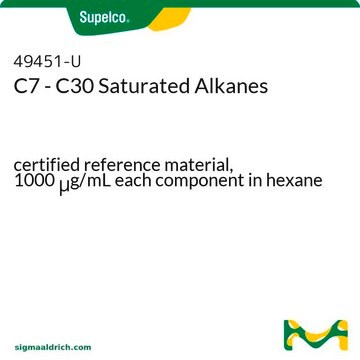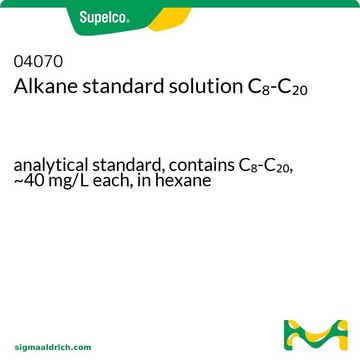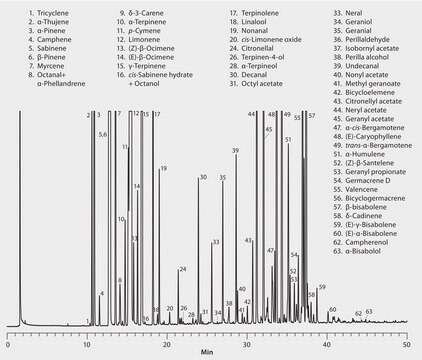40147-U
C8-C40 Alkanes Calibration Standard
in dichloromethane (varied)
About This Item
Polecane produkty
Certyfikat analizy
current certificate can be downloaded
Poziom jakości
opakowanie
pkg of 1 mL
stężenie
in dichloromethane (varied)
metody
HPLC: suitable
gas chromatography (GC): suitable
Zastosowanie
petroleum
format
multi-component solution
temp. przechowywania
2-8°C
Zastosowanie
Inne uwagi
Analit
Hasło ostrzegawcze
Warning
Zwroty wskazujące rodzaj zagrożenia
Zwroty wskazujące środki ostrożności
Klasyfikacja zagrożeń
Carc. 2 - Eye Irrit. 2 - Skin Irrit. 2 - STOT RE 2 - STOT SE 3
Organy docelowe
Central nervous system, Peripheral nervous system,Central nervous system,Cardio-vascular system,Eyes
Kod klasy składowania
6.1D - Non-combustible acute toxic Cat.3 / toxic hazardous materials or hazardous materials causing chronic effects
Klasa zagrożenia wodnego (WGK)
WGK 2
Temperatura zapłonu (°F)
Not applicable
Temperatura zapłonu (°C)
Not applicable
Wybierz jedną z najnowszych wersji:
Masz już ten produkt?
Dokumenty związane z niedawno zakupionymi produktami zostały zamieszczone w Bibliotece dokumentów.
Klienci oglądali również te produkty
Nasz zespół naukowców ma doświadczenie we wszystkich obszarach badań, w tym w naukach przyrodniczych, materiałoznawstwie, syntezie chemicznej, chromatografii, analityce i wielu innych dziedzinach.
Skontaktuj się z zespołem ds. pomocy technicznej











